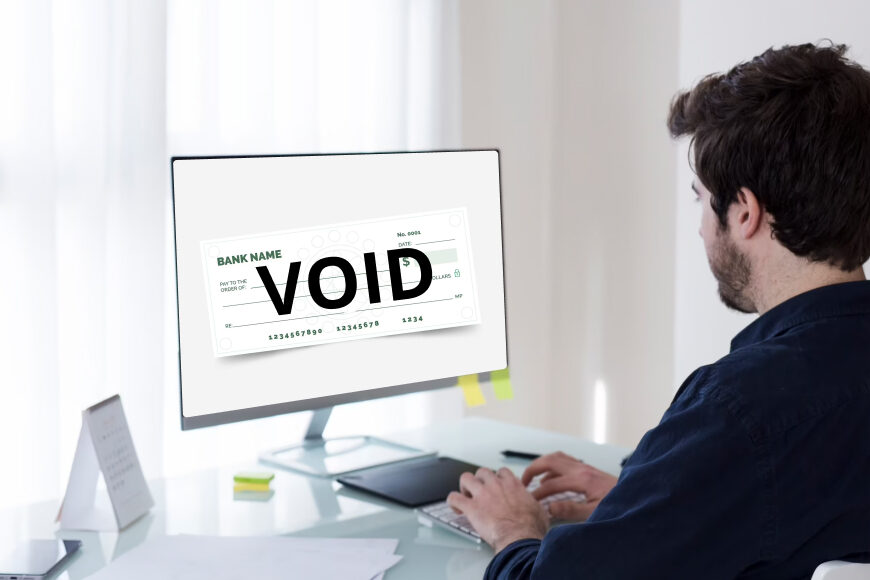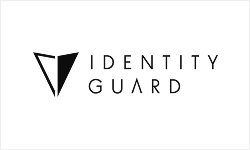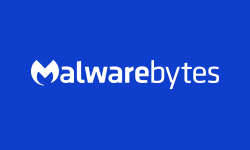In the world of finance and accounting, maintaining accurate records is paramount. When it comes to managing checks in QuickBooks, one essential task is voiding checks properly. Failing to void a check can lead to significant discrepancies in financial records and potentially create confusion during audits or reconciliations.
In this comprehensive guide, we will walk you through the step-by-step process of voiding a check in QuickBooks, along with best practices, troubleshooting common issues, and additional considerations to ensure accurate bookkeeping.
Understanding Check Voiding In QuickBooks:
Voiding a check in QuickBooks refers to the process of marking a check as void without deleting it entirely. This distinction is crucial because deleting a check erases all traces of the transaction, while voiding allows you to maintain an audit trail. Voiding a check provides a more accurate representation of your financial records by reflecting the intention to cancel the payment.
Step-By-Step Guide To Voiding A Check In QuickBooks:
If you need to void a check from a previous period or void a payroll check or any other type of payment to an employee or contractor, it is recommended to seek assistance from a QuickBooks Online ProAdvisor.
“These instructions are specific to the online version, and the process may differ slightly for QuickBooks Desktop.”
How To Void A Check On QuickBooks: A Detailed Guide To Bookkeeping
In the world of finance and accounting, maintaining accurate records is paramount. When it comes to managing checks in QuickBooks, one essential task is voiding checks properly. Failing to void a check can lead to significant discrepancies in financial records and potentially create confusion during audits or reconciliations.
In this comprehensive guide, we will walk you through the step-by-step process of voiding a check in QuickBooks, along with best practices, troubleshooting common issues, and additional considerations to ensure accurate bookkeeping.
Understanding Check Voiding In QuickBooks:
Voiding a check in QuickBooks refers to the process of marking a check as void without deleting it entirely. This distinction is crucial because deleting a check erases all traces of the transaction, while voiding allows you to maintain an audit trail. Voiding a check provides a more accurate representation of your financial records by reflecting the intention to cancel the payment.
Step-By-Step Guide To Voiding A Check In QuickBooks:
If you need to void a check from a previous period or void a payroll check or any other type of payment to an employee or contractor, it is recommended to seek assistance from a QuickBooks Online ProAdvisor.
“These instructions are specific to the online version, and the process may differ slightly for QuickBooks Desktop.”
Step 1: Access the Check Screen
To access the bank register where all issued checks are listed, go to the QuickBooks Online home page and select “Accounting” from the left-hand sidebar. Click on “Chart of Accounts,” choose the relevant checking account, and click on “View Register.”
Step 2: Locate the Check on the Check Register
Scroll through the check register until you find the specific check you wish to void. You can use filters such as date range, transaction amount, payee name and check number to locate the check in question.
Step 3: Edit the Check
Once you have identified the check, click on the line corresponding to that check. This will display several options for check details. Click on “Edit” to access the editing screen.
Step 4: Void the Check
At the bottom of the screen, click on “More.” A list of options will appear, and you should select “Void” to void the check.
Step 5: Confirm the Voiding
If the check you are voiding is a bill payment check, a warning message will appear to confirm that you want to void the check. This serves as a reminder to create a new bill payment check to replace the voided transaction. If you intended to void the check and it was not a mistake, click “Yes,” and a confirmation message will appear.
Step 6: Reissue the Check
Now that the check has been voided, you will need to issue a new check from the correct account, ensuring that the vendor is paid and your QuickBooks accounting software records are accurately updated.
Guide To Voiding A Bill Payment Check In QuickBooks Desktop
Step 1: Access the Check Register
- Go to the Banking menu on your QuickBooks Desktop home page and select Check Register. Alternatively, you can click on the Banking menu at the top of the screen and choose Use Register from the drop-down list.
Step 2: Choose the Check to Void
- Select the bank account from which the check you wish to void was issued. A window will open, displaying all the created checks. Double-click anywhere on the line of the check you want to void.
Step 3: Void the Check
- Once you have selected the check from the list, it will appear on the screen. Notice that the list also includes outstanding bills owed to the vendor associated with the check. Click on the small drop-down menu under the Delete button at the top of the check screen and choose Void.
NOTE – “Voiding a check and deleting a check have different implications. Voiding a check sets the balance to zero, while deleting a check removes the transaction completely from QuickBooks.”
- After clicking Void, the check amount will change to zero, indicating that the bill has been reverted to open status. The memo field will display “VOID.” Click the Save & Close button to void the check.
- Upon clicking Save & Close, you will be prompted with a message asking if you want QuickBooks to record the changes. Click Yes to proceed.
Steps To Void A Payroll Check In QuickBooks Desktop
Voiding a payroll check is more complex compared to voiding general checks, especially if all payroll tax returns have already been filed. This action can significantly impact your books and payroll software records. The recommended method for reissuing a payroll check is not to void it, but to reprint it with a new check number. Then, you can create a new check, assign it the old check number, and void it to maintain a paper trail.
Step 1: Access the Check Register
Follow the same steps mentioned above to access the check register for voiding a general check.
Step 2: Locate the Payroll Check
From the check register, choose the payroll check you want to void. Double-click anywhere on the entry line to view your paycheck. Take note of the existing check number of the check you wish to void.
Step 3: Reprint with a New Check Number
- To change the check number, click on the Print menu at the top of the payroll check window, and select Check from the drop-down list.
- QuickBooks Desktop will automatically generate a new check number. Verify that this number matches the check in your printer, or modify it if necessary, and then print the new check.
- Once the check with the new number is printed, it will be recorded in the check register automatically. You can find the new check in the register, and the old check will no longer be visible.
[Related: How To Print Checks Online In QuickBooks]
Step 4: Assign the Old Number to a New Check and Void It
This step is optional but recommended to indicate the voided status of the old check in your check register. To do this, click on the bottom-most line in the register, enter the old check number, and provide the necessary details.
Next, locate the old check in the register and follow the steps for voiding a check.
Key Point:
“It is good practice to ensure that all check numbers appear in the check register to prevent any missing blank checks. This is why many companies create and void checks in QuickBooks as a precaution.”
Best Practices To Follow To Void Checks In QuickBooks Online
When voiding checks, accuracy is of utmost importance. Double-check all information, such as check numbers, payees and amounts, to ensure you are voiding the correct check. Voiding the wrong check by mistake can create confusion and impact your financial reports.
To maintain a clear audit trail and provide context for voided checks, record a memo or reason for the voided transaction. Including a brief explanation can help you and others understand the rationale behind the voiding, which is especially valuable during reviews, audits, or when reviewing historical transactions.
- Avoid Voiding Reconciled Checks:
Voiding checks that have already been reconciled can lead to complications during the reconciliation process. It is generally recommended to avoid voiding reconciled checks. Instead, consult with your accountant or bookkeeper to explore alternative solutions for addressing the situation.
- Regular Check Reconciliation:
Performing regular check reconciliations is essential for maintaining accurate financial records. Reconciling checks ensures that your bank balances match your QuickBooks records, reducing the chances of errors and discrepancies.
What Is Better: To Void Or To Delete A Check In QuickBooks?
When you void a check, the amount is changed to $0.00, and “VOID” is appended to the Memo field. A voided check can always be re-entered. Voiding a check is recommended if you wish to maintain a record of the transaction in QuickBooks.
On the other hand, deleting a check completely erases the recorded transaction from QuickBooks, as if it never happened. Once a check is deleted, there is no way to restore it in QuickBooks. However, it is possible to re-enter a deleted check.
Comprehending the process of voiding a check in QuickBooks software holds significance for users and business owners. Voiding is preferred over deleting because it ensures an accurate record of all your transactions (as the check details remain in QuickBooks). The only scenario where a check should be deleted is if an entry has been accidentally duplicated.
When Should You Void A Check?
Voiding a check in QuickBooks Desktop is necessary in the following situations:
- A check was issued to the wrong person.
- A check has been lost or stolen.
- Incorrect details, such as the amount or date, were entered.
- Incorrect work locations (tax jurisdictions) were assigned to paychecks.
- Duplicate checks have been generated.
Except for duplicate checks, it is generally recommended to void checks and then issue corrected replacements.
Additional Considerations:
- Impact on Financial Reports:
Voided checks have an impact on financial reports, such as profit and loss statements or balance sheets. QuickBooks automatically adjusts the figures to account for the voided checks, ensuring your reports accurately reflect the financial state of your business.
- Bank Account Balances and Reconciliation:
Voiding checks affects your bank account balances in QuickBooks. By voiding checks instead of deleting them, you maintain a more accurate representation of your financial transactions, facilitating proper bank account reconciliation.
- Maintaining Documentation and Audit Trails:
It is vital to maintain proper documentation and audit trails for voided checks. Retain a record of the voided checks, including the memo or reason, to ensure transparency and accuracy in your financial records.
Conclusion:
Voiding a check properly in QuickBooks is an essential aspect of accurate bookkeeping. By following the step-by-step guide, adhering to best practices, and troubleshooting common issues, you can confidently manage voided checks while maintaining precise financial records.
Remember, accuracy and attention to detail are the keys to successful check voiding, ensuring the integrity of your financial data and providing a clear audit trail for future reference. By adopting these practices, you can streamline your bookkeeping processes and focus on the financial health and growth of your business.

![Unlocking Ahrefs Premium: Get Ahrefs Premium Accounts [100% Free]](https://s44815.pcdn.co/wp-content/uploads/2023/10/Ahrefs-Free-Premium-accounts-2023-330x250.webp)



















